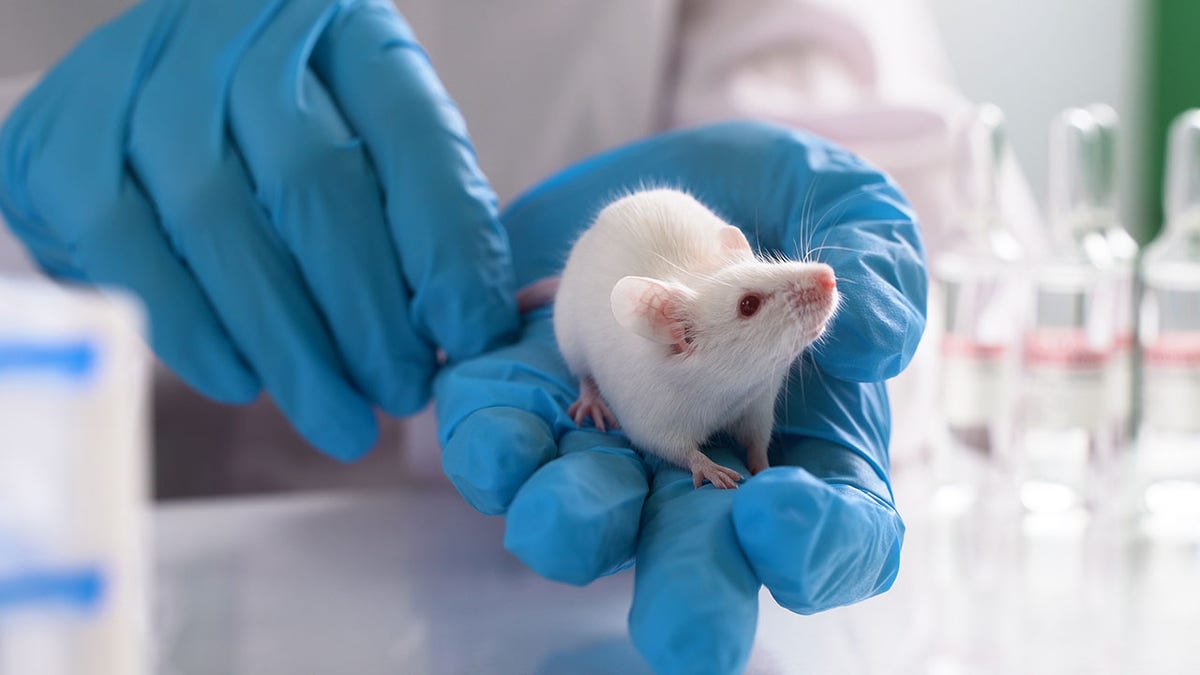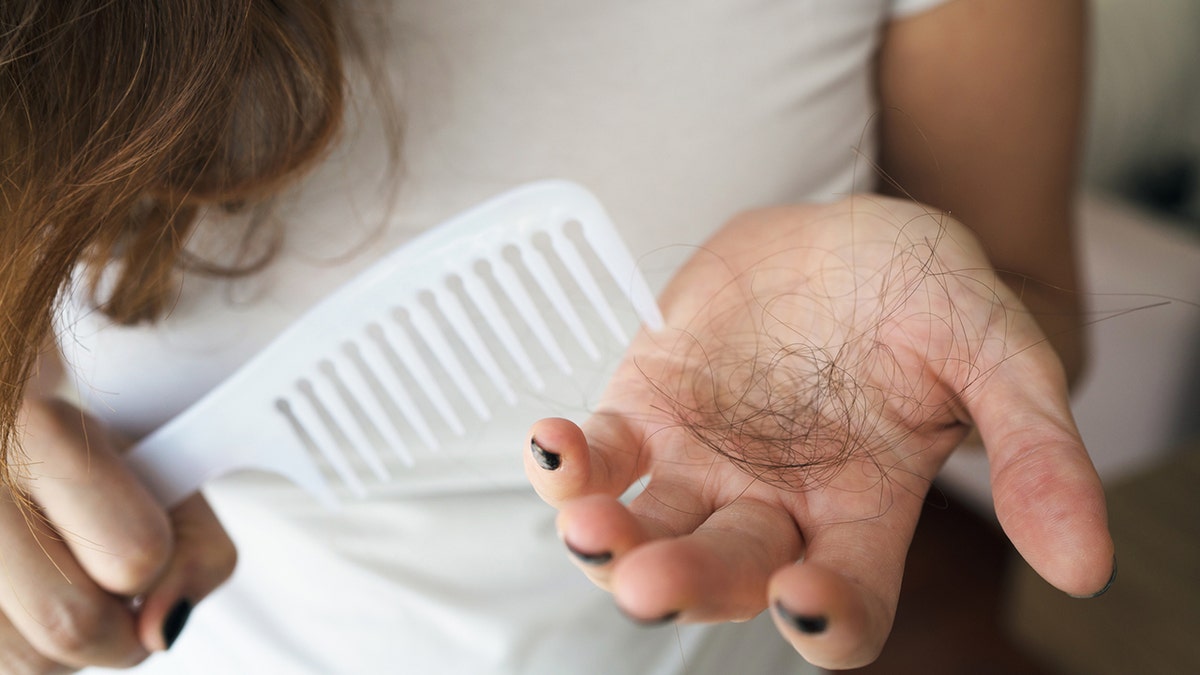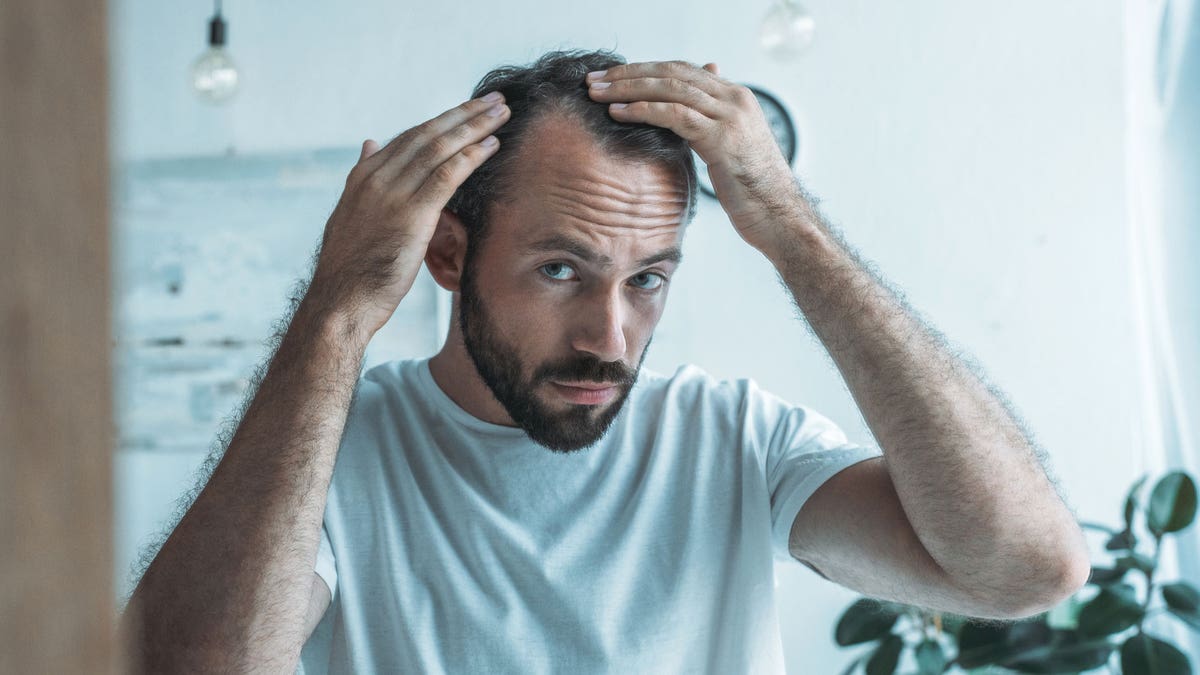NutNow you can listen to the Fox News items!
Researchers at the Hospital Clínic de San Carlos in Madrid could have directed a potential solution for hair loss.
A recent study analyzed the effect of mice skin injection with human fats stem cells-“adipose-derived stem cells (ASCS)”-as a means of treating androgenetic alopecia (AGA), better known as male or female pattern hair loss.
The team found that the male mice reached the best hair backward after three weeks when they received low doses asc, combined with a molecule that increases the energy called trifosphate adenosin (ATP).
Hairdressers and medical experts confirm the temporary loss of hair that affects Ozempic users
Low dose and high dose treatments, and ASC, along with ATP, led to an improvement in the reduction of hair in women, but ASC of more ATP medium doses caused a greater regulation.
The researchers concluded that the redemption of hair was improved in “all experimental groups” where male mice received solutions from ATP -complemented stem cells.
Researchers at the Hospital Clínic de San Carlos in Madrid could have directed a potential solution for hair loss. (Istock)
The findings were published in Stem Cell Research & Therapy.
The author of the main study, Dr. Eduardo López Bran, dermatologist and professor at the Complutense University of Madrid, shared his expectations for study in an interview with Fox News Digital.
This daily beauty routine could be ruining hair, warns experts
“We were expecting good results, but not such a high level of success,” he said. “We are talking about a very high degree of hair recovery in both male and female mice.”
With right doses, researchers achieved “very high percentages” of hair recovery, saying that 100% of male mice and up to 90% of female mice retreated their hair.

With right doses, researchers achieved “very high percentages” of hair recovery, saying that 100% of male mice and up to 90% of female mice retreated their hair. (Real mice of the study not shown.) (Istock)
“These results show that advanced therapies can represent a new therapeutic approach to many diseases for which there are currently no effective treatments,” Bran continued.
“To achieve such promising results in the preclinical phase with a completely new approach to androgenetic alopecia, which avoids chronic treatment and is also safe, is an important scientific milestone.”
“We are talking about a very high degree of hair recovery in both male and female mice.”
The main limitation of the study was the thinness of the mouse’s skin, said Bran, “which was a challenge to administer therapy.”
Click here to get the Fox News app
“This required the development of protocols to minimize experimental variability and will be a key factor when they begin their studies in humans,” he said.

“Advances in research are pointing to possible solutions that, in the future, can offer lasting results without the need for continuous treatment to maintain benefits.” (Istock)
These new findings should “interpret them with scientific precaution and rigor,” Bran warned.
“Although mice results represent significant progress, it is also true that it is imperative to expect clinical benefits to humans.”
Click here to register -you are in our health newsletter
The researcher encouraged those with androgenetic alopecia to continue consulting with their dermatologists and to follow the prescribed treatments as the investigation develops.
“It is important to remain hopeful. The advances in research point to possible solutions that, in the future, can offer lasting results without the need for continuous treatment to maintain benefits,” added Bran.
“This study is small and more research is needed on this method as a potential treatment option.”
With the view of human clinical trials, researchers are “actively working” to confirm safety for men and women between the ages of 18 and 50 with a moderate androgenetic alopecia, said the researcher.
“If everything is moving forward as expected, the most optimistic time line points to the treatment of about five years,” he said.

We look forward to human clinical trials, researchers are “actively working” to confirm safety for men and women between the ages of 18 and 50 with moderate androgenetic alopecia. (Istock)
In a separate interview with Fox News Digital, Dr. Brendan Camp, MD, a New York dermatologist who was not involved in the study, commented on the potential of this method.
“Although it is unavailable commercially, this study suggests that the injection of stem cells complemented by ATP on the scalp skin could promote the reinforcement of the hair in individuals with androgenetic alopecia,” he reiterated.
For more health items, visit www.foxnews.com/health.
“This study is small and more research is needed as a potential treatment option for androgenetic alopecia.”
Until then, Camp encourages people to focus on currently available and “well-studied” treatments to deal with hair loss and to visit a board-certified dermatologist for evaluation.
#stem #cell #therapy #shows #promising #results #treat #hair #loss #preclinical #trials
Image Source : www.foxnews.com
